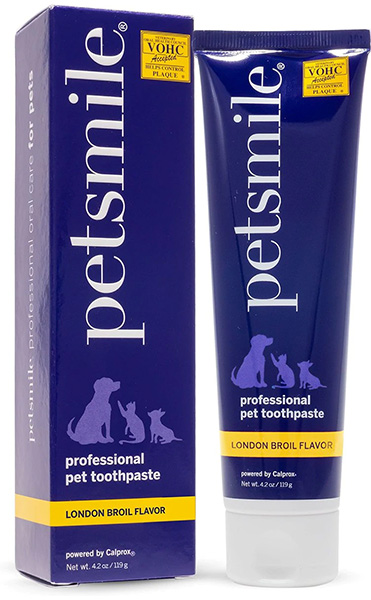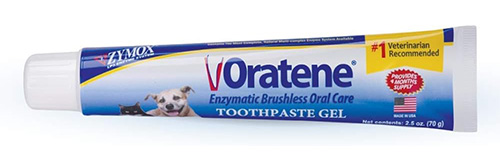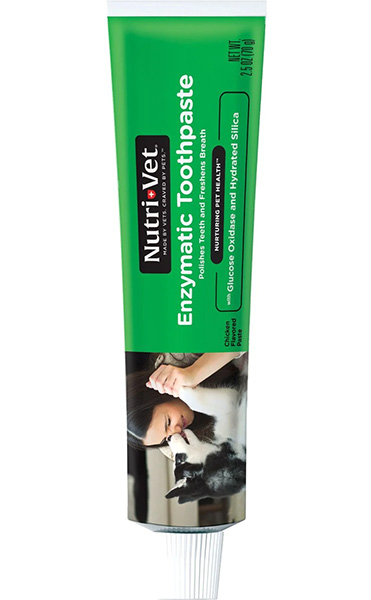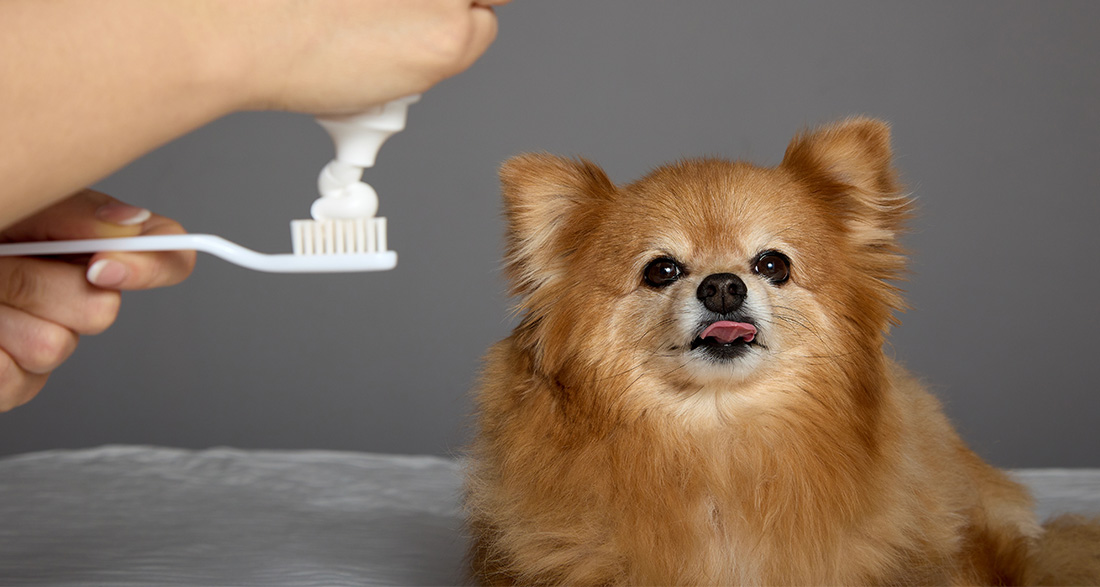Are you in search of the best dog toothpaste? One with delicious meat flavor and protection for your furry friend’s teeth? After thoroughly reviewing all products and consulting with experts, we can recommend these brands to you. In the guide, you’ll also find plenty of tips and usage examples for the toothpaste as a bonus. So stay tuned. 🐶
Our Top Picks
[table id=44 cache_table_output=false /]
How we test 🐶
We’ve scrutinized the best dog toothpaste options to make your selection easier. Here, you’ll find valuable product information, expert opinions, and product features.
When searching for the top products on the market, there are a few important things to consider. Not all dog toothpaste products are the same.
The price of dog toothpaste doesn’t necessarily correlate with quality. That’s why this comparison was crucial to us. We aim to provide not just a list of top-rated toothpaste but meaningful insights.
Buying Guide

Why Your Dog Needs Dog Toothpaste
Dogs have similar dental needs to us humans. Dental issues such as cavities and plaque are common problems that can develop quickly.
Dry dog food, hard bones, and treats can contribute to promoting dental hygiene, thus keeping your dog’s teeth healthy.
Although these products are used regularly, it’s still necessary to brush your dog’s teeth a few times a week.
Often, dog owners believe that dental problems are normal for dogs or that dental care is unnecessary. Unfortunately, we must emphasize the opposite:
Dental problems should never be taken lightly!
Choosing the Right Dog Toothpaste
Toothpaste for humans is not suitable for dogs. Dogs have different nutritional needs than we do. Therefore, dog toothpaste differs from human toothpaste in several ways.
Use a toothpaste specifically made for pets. Human toothpaste contains fluoride and detergents that should not be swallowed.
Dogs don’t enjoy the taste of mint. Using your own toothpaste can make tooth brushing even more unpleasant for your dog.
Many dog toothpaste products come in chicken or beef flavors. Purchase a few different flavors to see what your dog prefers.
If your furry friend loves the taste of a toothpaste, you’re on the right track.
You’ll find a wide selection of toothpaste. Pay close attention to the sugar content of dog toothpaste. Choose the paste with the lowest sugar content or, even better, none at all.
Most toothpaste products are antibacterial and may contain enzymes (lactoperoxidase and glucose oxidase). They react with saliva and become antibacterial.
What Should the Toothbrush Be Like?
As for the toothbrush, it’s entirely up to you.
Although there are toothbrushes specifically made for pets, any new, soft-bristled toothbrush can be used. Look for a brush with a long handle and a brush head that is small enough to fit into their cheek.
A dog’s toothbrush should also be replaced after a while. At least every three months or when the bristles are worn out.
Home Remedies as Dog Toothpaste
Alternatively, you can mix one part baking soda with two parts water to create a natural tooth cleaning solution.
Dip the toothbrush into the baking soda paste and gently brush your dog’s teeth.
However, your dog might not enjoy the taste.
Brushing Teeth – Step-by-Step Guide

Step 1
Use the paste sparingly. Approach your dog’s teeth gently, carefully, and slowly to avoid startling them. Make tooth brushing a fun experience rather than one your dog wants to flee from.
Step 2
Let your dog sniff the brush first before inserting it into their mouth. Allowing a few minutes for sniffing and licking will help establish a familiar connection with the brush.
Step 3
When your dog closes their mouth, start with the easily accessible front teeth until they get used to the process. Gradually work your way to the sides and then the back teeth.
Try to brush slowly and gently in the same circular motion as you brush your own teeth.
Step 4
Pet and praise your dog while brushing their teeth. This will help them feel more comfortable with the experience.
Don’t get angry or frustrated if you encounter difficulties while brushing. Your dog will pick up on these feelings and may think tooth brushing is something to avoid.
Step 5
If the toothpaste is one that should not be swallowed, moisten a washcloth with water and wipe the paste off your dog’s teeth.
Detailed Product Reviews
Premium Recommendation

This dental care product prevents plaque, tartar, and thus bad breath. With papain, turmeric, and coconut oil, it gently cleans the teeth. The ingredients are natural. It is gentle yet effective in maintaining dental health. It helps prevent gum disease and inflammation. With its neutral taste, it is easy to apply. Spread the toothpaste on your dog’s favorite toy and let them do the work.
Best Value Recommendation

Here we have a very popular dog toothpaste. Due to its meat flavor, it will also be well-received by your dog.
Not only is the product popular, but it is also convincing in terms of quality. Trixie toothpaste supports dental care with its pleasant aroma. It has tartar-preventing properties and gives your dog fresh breath. This product is also available in mint flavor!
2 in 1 Alternative

A grooming set from the Oratene brand: It includes a tube of dental care gel and an attachment for easy administration.
Does your dog suffer from inflamed, pus-filled gum pockets? Then you have a fast-healing product here. The enzyme-containing toothpaste prevents plaque and tartar formation.
The malt-flavored toothpaste prevents bad breath and brings back the joy of playing with your dog.
Recommended by Veterinarians

Are you also struggling with discoloration of your dog’s teeth? Then we recommend Nutri Vet dog toothpaste. Positive results will be visible shortly. With regular use, you will restore the natural color of the teeth. Regular use of Nutri Vet toothpaste removes plaque and prevents tartar formation. The mild taste obediently invites dogs to dental care.
Conclusion
It’s important to take care of your dog’s dental health. Regular brushing can help prevent dental problems and improve your dog’s well-being.
There are even flavored toothpastes that can make brushing more enjoyable for your dog! During the adjustment phase, proceed gently and patiently to avoid overwhelming your furry friend.
While brushing, observe your dog closely and lovingly support them. This way, you can detect potential issues like tartar buildup or gum inflammation early on and effectively address them.
With a bright smile and healthy teeth, your dog will be grateful and lead an even happier life!
Frequently Asked Questions
How do dental problems occur in dogs?
Plaque accumulates on the teeth due to the combination of saliva, food debris, and bacteria. Gum inflammation occurs in the soft tissues around the teeth.
If this plaque remains, it hardens into tartar. Then, the normal cleaning action of your pet’s chewing is no longer sufficient to keep their mouth clean.
Six to eight hours after brushing, plaque forms on human teeth.
The same process happens in dogs. The normal immune system in the mouth can neutralize the harmful effects. However, periodontitis can still occur.
Make an effort to brush your dog’s teeth every day or at least a few times a week.
It might sound daunting to you, but in fact, it’s easier to brush their teeth daily than a few times a month.
Studies have shown that brushing prevents oral diseases. Simply grab the appropriate toothbrush and toothpaste and don’t hesitate.
The entire process should only take 30 to 60 seconds. When you consider the health consequences or costs, it’s a worthwhile investment. Why make something more complicated than it needs to be?
How do I get my dog used to brushing their teeth?
Certainly, practice makes perfect! It’s best to start training early with a puppy to get them accustomed to it.
With an adult dog, however, try to make the experience as positive as possible.
Introduce tooth brushing slowly. Start with one or two teeth at first, and offer lots of praise and treats as you expand your efforts.
If you try to grab your dog and force the toothbrush into their mouth, it will likely be a one-time experience as your pet will run away from you.
That’s why the first experience is crucial for your beloved pet! Take it step by step as described.
What should I do if my dog refuses?
There are alternatives to brushing a dog’s teeth. From the most effective to the least effective, there are various products available.
Options include pads for wiping teeth, rinses, toys, treats, water additives, and dietary supplements that promote oral health.
But none of these keep your dog’s mouth as clean as brushing with toothpaste!
How do I recognize dental problems in my dog?
Recognizing dental issues can help alleviate your dog’s pain.
Please note that dogs usually don’t show their pain, so you need to be very observant and watch them closely.
Some obvious symptoms include:
- Difficulty chewing
- Refusal to eat
- Lethargy
- Excessive drooling
- Pawing at the mouth, rubbing face
- Discoloration of teeth, usually yellowish-brown buildup
- Bad breath
- Bleeding/redness of gums
My dog has tooth pain – what can I do?
Dogs can suffer from pain just like we do. Treatments range from short-term pain relief to veterinary dental care.
You can offer short-term pain relief to your dog. In the meantime, arrange a visit to the vet.
Until your appointment, you can help alleviate tooth pain with cold water or finely shaved ice. Dogs can also safely tolerate appropriate pain medication for up to two days.
If your dog can’t eat due to pain, try baby food or other soft foods. These can encourage your dog to continue eating.


